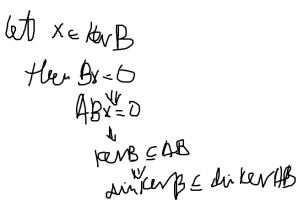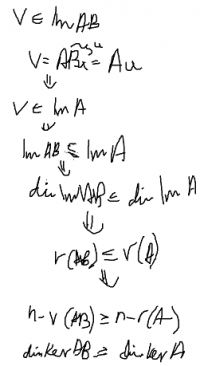TheWrathOfMath
Junior Member
- Joined
- Mar 31, 2022
- Messages
- 162
Prove that dimKerAB is less than or equal to dimkerA+dimkerB.
I was able to prove that dimKerB is less than or equal to dimkerAB and that dimKerA is less than or equal to dimKerAB.
I was able to prove that dimKerB is less than or equal to dimkerAB and that dimKerA is less than or equal to dimKerAB.


